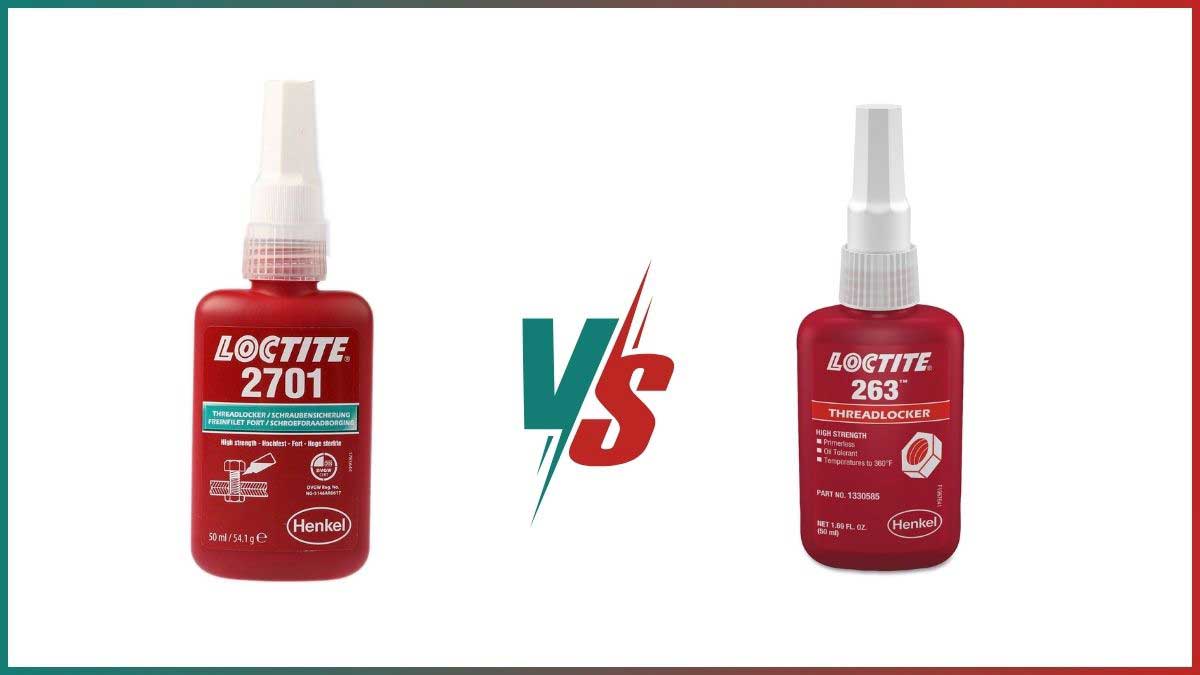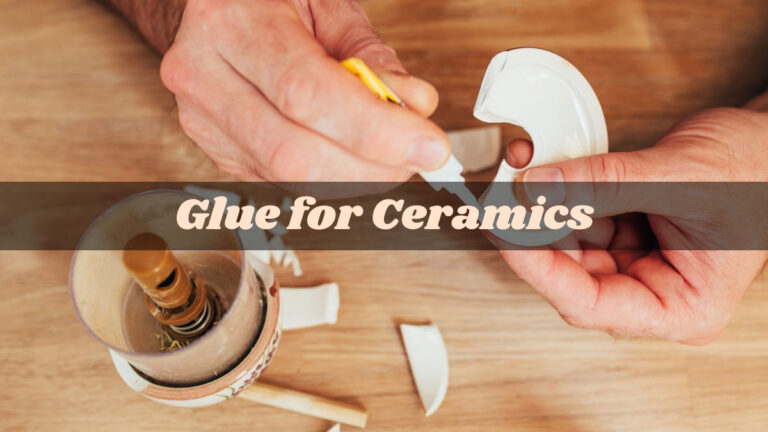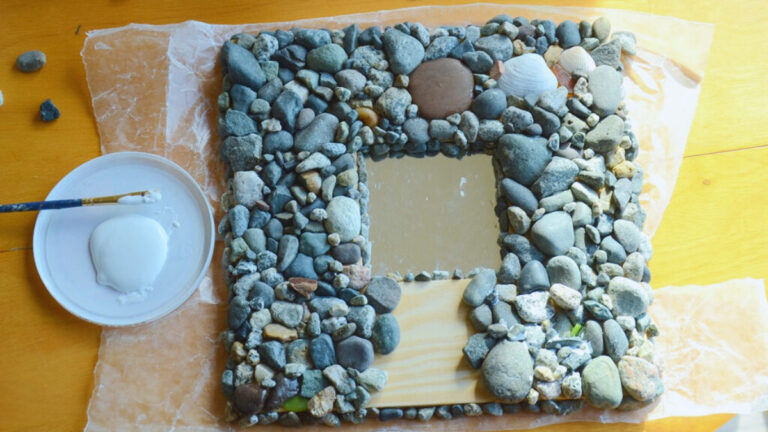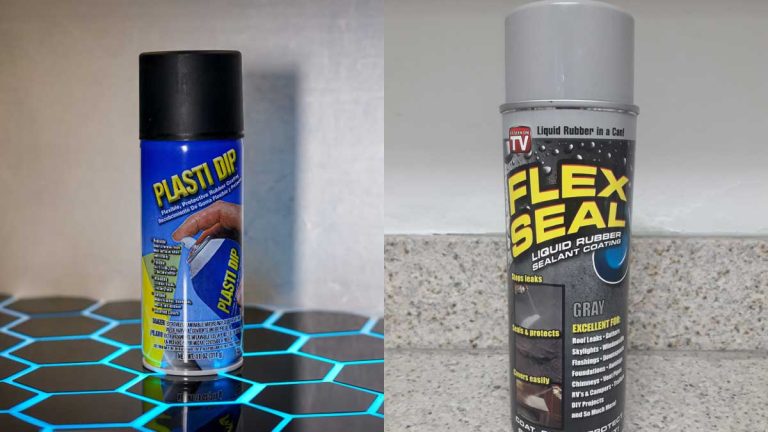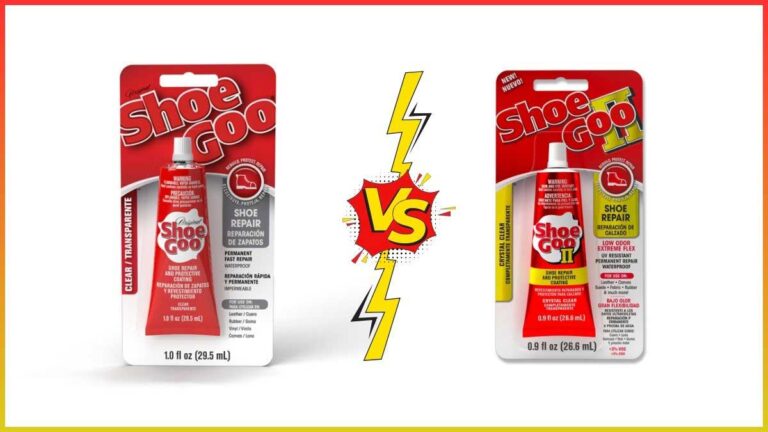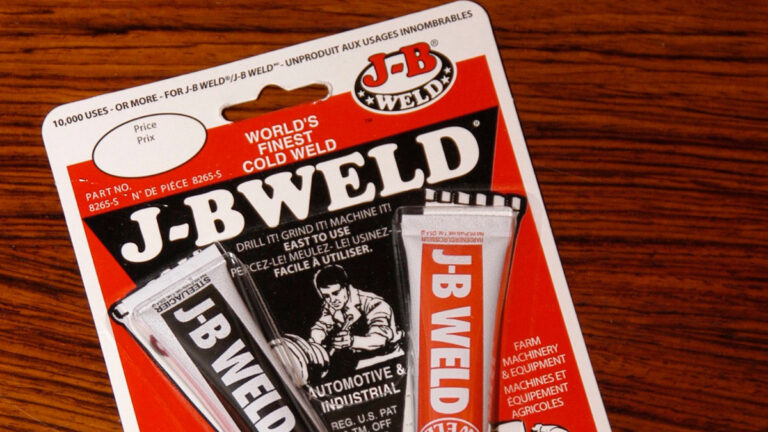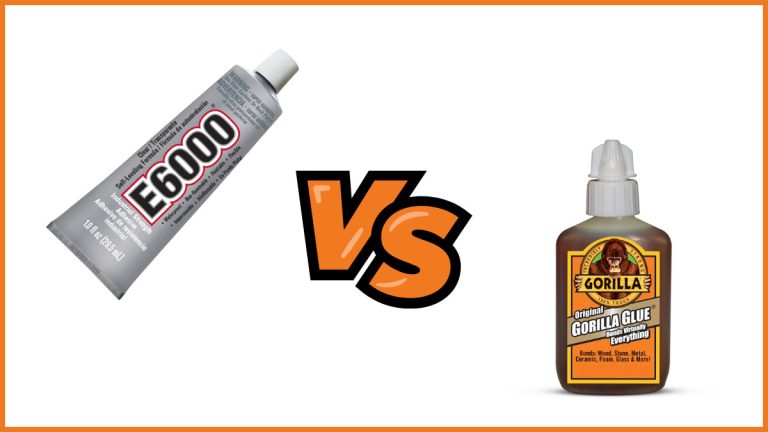Green Loctite vs Red: Best Uses and Key Differences Explained
Choosing the right adhesive can make or break your project, especially when it comes to threadlockers like green and red Loctite. These two variants serve different purposes and knowing which one to use can save you time, money, and frustration.
Green Loctite is often used for pre-assembled parts, while red Loctite is known for its high strength and is typically used for heavy-duty applications. Understanding the key differences between these two can ensure your components stay secure and perform optimally. Let’s jump into what sets green and red Loctite apart and how to choose the best one for your needs.
Key Takeaways
- Red Loctite for Permanent Bonds: Red Loctite provides high-strength adhesion, ideal for heavy-duty and high-vibration applications like auto suspensions and structural bolts. Removing it often requires heat up to 500°F and special chemicals.
- Green Loctite for Precision and Wicking: Green Loctite is designed for preassembled parts and offers high-strength wicking properties, making it suitable for set screws and bearing retainers. Removal typically needs heat and torque or special chemicals.
- Threadlocker Function: Both green and red Loctite are threadlockers used to prevent threaded fasteners from loosening due to vibration, shock, or thermal expansion, ensuring the stability and integrity of assembled components.
- Application Differences: Red Loctite is thicker and meant for direct application to threads in heavy-duty scenarios, while Green Loctite is thinner, allowing it to wick into narrow gaps, ideal for precision tasks involving preassembled components.
- Choosing the Right Threadlocker: Selecting between the two depends on the specific application needs. Red Loctite is best for permanent, non-disassemblable bonds, whereas Green Loctite excels in precise applications requiring wicking capabilities.
Overview Of Threadlockers
Threadlockers are adhesives specifically designed to prevent threaded fasteners from loosening due to vibration, shock, or thermal expansion. They play a crucial role in maintaining the integrity and safety of assembled components.
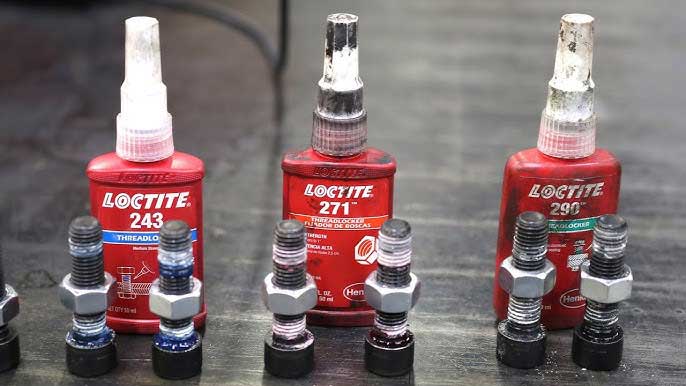
Key Terms
- Threadlocker: An adhesive used to lock and seal threaded fasteners.
- Wicking: The capability of a liquid to flow in narrow spaces without external forces.
- Torque: A measure of the force that can cause an object to rotate about an axis.
Purpose and Application
Threadlockers come in various formulations to suit different needs.
Red Loctite: A high-strength threadlocker meant for permanent applications. It’s ideal for structural bolts in homes, auto suspensions, and frames where disassembly isn’t anticipated.
Green Loctite: Although also high-strength, green Loctite is designed for wicking into narrow gaps. It’s suited for bearing and sleeve retainers and pre-assembled fasteners like set screws.
Strength and Removability
Different threadlockers offer varied adhesion levels and removal processes.
Red Loctite: Known for its highest adhesion strength, removing it typically requires applying heat (about 500°F) and torque. This makes it reliable for high-vibration scenarios.
Green Loctite: While it offers strong adhesion, it’s specifically useful for pre-assembled parts where precision is essential. Its wicking property allows it to secure fasteners post-assembly.
Table: Comparison of Green and Red Loctite
| Criteria | Red Loctite | Green Loctite |
|---|---|---|
| Strength | Highest | High |
| Application | Permanent, structural bolts | Bearing, sleeves, pre-assembled |
| Removability | Requires heat (500°F) & torque | Specialized for precision |
| Vibration | Ideal for high-vibration | Suitable for assembled parts |
| Use Cases | Auto suspensions, home structures | Set screws, retainers |
Summary
Selecting the appropriate threadlocker depends on your specific needs. Use red Loctite for permanent, heavy-duty applications, ensuring components stay secure even though vibrations. Opt for green Loctite for pre-assembled parts where precision and wicking into narrow gaps are crucial.
Key Characteristics Of Green Loctite
Green Loctite offers distinct features making it suitable for specific applications. It’s designed for precision and high-strength wicking into tight spaces, which sets it apart from other adhesives like Red Loctite.
Application And Uses
Green Loctite excels in applications requiring wicking properties. It’s ideal for:
- Pre-assembled Fasteners: Excellent for securing fasteners already in place without needing disassembly.
- Set Screws: Perfect for wicking into set screws, thanks to its high wicking ability.
- Bearing and Sleeve Retainers: Effective in retaining bearings and sleeves precisely where needed.
Strength And Removability
Green Loctite combines high adhesion strength with specific removability requirements:
- High Strength Wicking: Offers high adhesion, particularly designed for wicking into narrow gaps.
- Removability: Can’t be removed by just applying torque. Requires heat or special chemicals along with torque for disassembly.
| Feature | Green Loctite | Red Loctite |
|---|---|---|
| Strength | High Strength Wicking | High Strength |
| Ideal For | Pre-assembled fasteners, set screws, retainers | Permanent applications, structural bolts |
| Removability | Requires heat and potentially special chemicals | Requires heat (around 500°F) and torque |
Green Loctite’s unique characteristics make it indispensable for applications where precision and high-strength wicking are crucial. Choose Green Loctite for pre-assembled components and precision tasks.
Key Characteristics Of Red Loctite
Red Loctite offers specific high-strength properties vital for certain applications. Its permanent adhesion and robust bonding make it indispensable in many heavy-duty settings.
Application And Uses
Red Loctite is essential in high vibration environments. It’s designed for:
- Auto suspensions: Ensures parts stay securely fastened.
- Frames and heavy machinery: Provides a permanent hold for structural components.
These applications benefit from Red Loctite’s strong and permanent bond, reducing maintenance needs.
Strength And Removability
Red Loctite’s strength sets it apart. Here’s a look:
- High Strength: Offers exceptional adhesion for demanding applications.
- Permanent Bond: Ideal for joints that shouldn’t be disassembled.
- Removability: Disassembling requires specific conditions. Applying heat up to 500°F or using special chemicals helps break the bond.
This strong adhesion is vital for applications needing long-term stability.
Green Vs. Red Loctite: A Detailed Comparison
Choosing the right threadlocker ensures your assembly’s stability and longevity. Your decision between green and red Loctite depends on adhesion strength, viscosity, and material compatibility.
Performance Under Different Conditions
Adhesion Strength:
- Red Loctite: Delivers robust, permanent adhesion. Essential for high-vibration applications where disassembly isn’t anticipated. Removal requires heat (up to 500°F) or special chemicals.
- Green Loctite: Provides high strength for narrow gaps, ideal for preassembled fasteners like set screws. Removal also demands heat and torque or special chemicals.
Viscosity and Wicking:
- Green Loctite: Thinner, enabling it to wick into tight gaps. Ideal for applications needing deep penetration.
- Red Loctite: Thicker consistency, lacking wicking properties. Suitable for applications without the need for deep penetration.
Compatibility With Materials
Red Loctite:
- Metals: Works exceptionally well with ferrous and non-ferrous metals.
- Plastics: Use caution; some formulations may not be compatible.
- Fasteners: Best for bolts, nuts, and high-load applications requiring permanent bonds.
Green Loctite:
- Metals: Versatile for both ferrous and non-ferrous metals, particularly in preassembled conditions.
- Small Screws and Fasteners: Optimizes retention by wicking into preassembled threads, ideal for electrical components and set screws.
Long-Term Reliability
- Red Loctite: Ensures structural integrity in high-vibration settings like automotive suspensions and machinery, thanks to its permanent bond.
- Green Loctite: Maintains reliability in assembled components by penetrating tight spots, perfect for smaller-scale applications requiring precision.
| Property | Green Loctite | Red Loctite |
|---|---|---|
| Adhesion Strength | High, specifically for narrow gaps | High, for heavy-duty applications |
| Viscosity | Thin, for wicking | Thick, no wicking |
| Compatibility | Metals, small screws | Metals, high-load fasteners |
| Removability | Heat and torque required | Heat (up to 500°F) or chemicals |
Choosing The Right Threadlocker For Your Needs
Selecting the appropriate threadlocker is essential for ensuring fastener longevity and reliability. Green and red Loctite, two popular options, offer different properties suited for various applications. Understanding these differences will help you make an well-informed choice.
Key Differences
Adhesion Strength And Purpose
- Red Loctite: This high-strength threadlocker is designed for permanent adhesion. It’s perfect for applications where parts will not need to be disassembled later, such as structural bolts and heavy machinery. Red Loctite requires special heat and/or chemicals to break the bond.
- Green Loctite: Known as a high-strength wicking threadlocker, green Loctite is ideal for preassembled fasteners and bearings. It is used in high-vibration applications where disassembly is not anticipated. Similar to red Loctite, removal necessitates heat and/or chemicals.
Removability
- Red Loctite: The most permanent of threadlockers, red Loctite requires significant effort for removal, typically involving heat up to 500°F and torque.
- Green Loctite: Though also permanent, green Loctite is more suited for smaller fasteners and precise applications. Removal, like red Loctite, involves heat and chemicals.
Use Cases
- Red Loctite: Best for heavy-duty applications that demand the highest strength. Examples include auto suspensions, heavy machinery, and structural components.
- Green Loctite: Used for preassembled components, such as bearing housings, or in high-vibration environments, ensuring secure fastening without the need for future disassembly.
Comparison Table
| Property | Red Loctite | Green Loctite |
|---|---|---|
| Strength | High (Permanent) | High (Permanent) |
| Viscosity | Thick | Thin (Wicking) |
| Best For | Structural bolts, auto suspensions | Bearings, preassembled fasteners |
| Removal Method | Heat (up to 500°F), chemicals | Heat, chemicals |
| Application Method | Apply directly to threads | Apply to assembled parts |
Steps To Apply Loctite
- Clean the Surface: Ensure surfaces are free from oil, dirt, and grease.
- Apply Threadlocker:
- For red Loctite, apply directly to the threads.
- For green Loctite, apply to the assembled parts, allowing it to seep into gaps.
- Assemble and Cure: Assemble parts promptly after application. Allow curing as per the manufacturer’s instructions.
Summary
Choosing between green and red Loctite depends on your specific needs. Red Loctite offers permanent, robust adhesion ideal for high-load and high-vibration applications. Green Loctite suits precision tasks, wicking into narrow gaps in pre-assembled parts. Understanding these distinctions ensures you select the threadlocker that meets your requirements effectively.
Conclusion
Choosing between green and red Loctite eventually depends on your specific application needs. Red Loctite offers unparalleled strength for heavy-duty, permanent fixes in high-vibration environments, making it perfect for structural bolts and heavy machinery. On the other hand, green Loctite excels in precision applications, wicking into narrow gaps and securing pre-assembled parts like bearings and sleeves.
Understanding the unique properties of each type ensures you select the right threadlocker for the job. Whether you need the robust, permanent bond of red Loctite or the precise, wicking capabilities of green Loctite, making an informed choice will keep your projects secure and reliable.
Frequently Asked Questions
What is the main difference between red and green Loctite?
Red Loctite offers high-strength adhesion suited for permanent applications, while green Loctite is designed for wicking into narrow gaps and is ideal for pre-assembled parts.
When should I use red Loctite?
Red Loctite is best for heavy-duty applications like structural bolts and high-vibration environments such as auto suspensions and heavy machinery. It ensures a permanent bond.
Can red Loctite be removed?
Yes, but red Loctite requires heat up to 500°F or the use of special chemicals and tools to break the bond for disassembly.
What is green Loctite used for?
Green Loctite is ideal for pre-assembled parts, such as set screws and bearings. It wicks into tight gaps, securing components without disassembly.
Is special preparation needed to apply green Loctite?
Yes, ensure the parts are clean and pre-assembled. Green Loctite will wick into the gaps, and you can apply heat combined with torque or special chemicals for removal.
Which Loctite is better for smaller screws and fasteners?
Green Loctite is optimized for smaller screws and fasteners as it wicks into narrow gaps, ensuring a secure fit.
Are both red and green Loctite compatible with all metals?
Yes, both types are compatible with ferrous and non-ferrous metals, but red Loctite is preferred for high-load applications.
Which Loctite is better for high-vibration environments?
Red Loctite is essential for high-vibration environments, ensuring parts remain securely fastened due to its high-strength properties.

